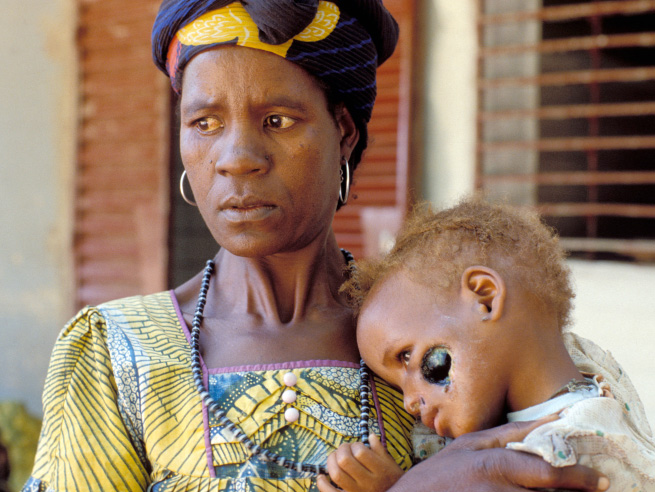Noma: An Overlooked Scourge in Underserved Regions
Noma, recently included in the official list of Neglected Tropical Diseases (NTDs) by the World Health Organization (WHO), encompasses a cluster of diseases such as snakebite venom, itch, yaws, trachoma, leishmaniasis, and Chagas disease. These afflictions prevail in regions characterized by hot climates, including Asia, Australia, Africa, South America, Central America, Mexico, and the Pacific Islands.
The Socioeconomic Factor and Disease Prevalence
The prevalence of these diseases in these areas correlates with the lack of access to clean water for drinking and inadequate sanitation among the residents. This absence of basic amenities contributes significantly to the incidence of these diseases among the populace.
Unveiling Noma: Understanding the Disease
Noma, also known as “cancrum oris” or “gangrenous stomatitis,” is a severe ailment affecting the mouth and face. The term “noma” originates from the Greek word ‘nomos,’ signifying ‘to devour,’ as it consumes the tissues and bones of the face.
Who Does Noma Affect?
Primarily impacting children aged 2 to 6 in hot climates, Noma is not exclusive to this demographic. Individuals with compromised immunity due to diseases like HIV/AIDS and leukemia are also susceptible.
Understanding Noma: Symptoms and Impact
This disease initiates as swelling of the gums caused by bacteria in the mouth. If not promptly treated, this inflammation leads to rapid destruction of tissues and bones in the affected area, resulting in fatality in most cases. Survivors often face lifelong facial disfigurement, enduring difficulties in breathing, swallowing, speaking, vision, and facial closure.
Treatment Approaches
According to the UNHCR’s research report, early intervention can prevent both facial deformities and the progression of the disease. The initial phase of treatment involves straightforward measures such as antibiotic administration, regular mouth cleansing, and proper nutrition. However, once Noma progresses, surgical intervention becomes necessary, albeit challenging and costly.
Understanding NTDs: Neglected Tropical Diseases Around the Globe
Neglected Tropical Diseases (NTDs) constitute a diverse group of conditions, as outlined by the World Health Organization (WHO), primarily prevalent in tropical regions where they impact over 1 billion individuals living in impoverished communities.
Exploring the Scope of Neglect
These diseases earn their moniker due to their exclusion from the global health agenda. They proliferate predominantly in rural areas, conflict zones, and regions with limited resources, often termed as challenging terrains.
Within the NTD list, there exist 21 diseases, encompassing ailments such as Chagas disease, dengue fever, chikungunya, leishmaniasis, leprosy, lymphatic filariasis, and mycetoma.
India and the Burden of Neglected Tropical Diseases (NTDs)
In 2017, the World Health Organization’s report highlighted India’s ability to effectively combat leprosy in 82% of its cities and districts. The Health and Family Welfare Ministry also acknowledged India’s near eradication of yaws, an old endemic disease, alongside successfully controlling the transmission of tetanus.
Among the 21 diseases listed under NTDs, lymphatic filariasis, visceral leishmaniasis, rabies, leptospirosis, dengue, and soil-transmitted helminthiasis (STH) rank as the most prevalent in India.
Impact on Vulnerable Communities
The crux lies in how NTDs disproportionately affect impoverished populations, evident in the annual toll of affected individuals in India.
According to WHO data, India leads in several prominent NTD cases compared to other nations worldwide. However, the nation has made remarkable strides in controlling various diseases, offering a glimmer of hope amidst these challenges.
India’s Initiatives Against NTDs
The Indian government has launched several initiatives aiming to eradicate NTDs from the country altogether:
- National Rabies Control Program: This program initiated the vaccination of stray dogs and provided free vaccinations across government hospitals, targeting rabies elimination.
- National Vector Borne Disease Control Program (NVBDCP): Spearheaded by the central government, this program aids in preventing vector-borne diseases like malaria, filariasis, Japanese encephalitis (JE), kala-azar, dengue, and chikungunya.
- National Leprosy Eradication Program: Commenced in 2005, this program aimed to completely eradicate leprosy. While the incidence rate drastically reduced to fewer than 1 per 10,000 people, India still held the highest number of affected individuals globally.
- National Health Policy: Initiated in 2017, this policy encourages the affordability of new medications for those most in need.
- National Policy on Rare Diseases Treatment: Focused primarily on identifying and researching rare and infectious tropical diseases.
India’s commitment to these initiatives showcases a dedicated approach towards curbing the prevalence and impact of NTDs.
Conclusion
While Neglected Tropical Diseases continue to present a formidable challenge, India’s strategic interventions and policies offer promising avenues in combating these ailments, potentially leading to their eventual eradication. The concerted efforts made by the government underscore a commitment to the health and well-being of its populace, fostering hope for a future free from the shackles of NTDs.
Disclaimer : इस न्यूज़ पोर्टल को बेहतर बनाने में सहायता करें और किसी खबर या अंश मे कोई गलती हो या सूचना / तथ्य में कोई कमी हो अथवा कोई कॉपीराइट आपत्ति हो तो वह [email protected] पर सूचित करें। साथ ही साथ पूरी जानकारी तथ्य के साथ दें। जिससे आलेख को सही किया जा सके या हटाया जा सके ।







